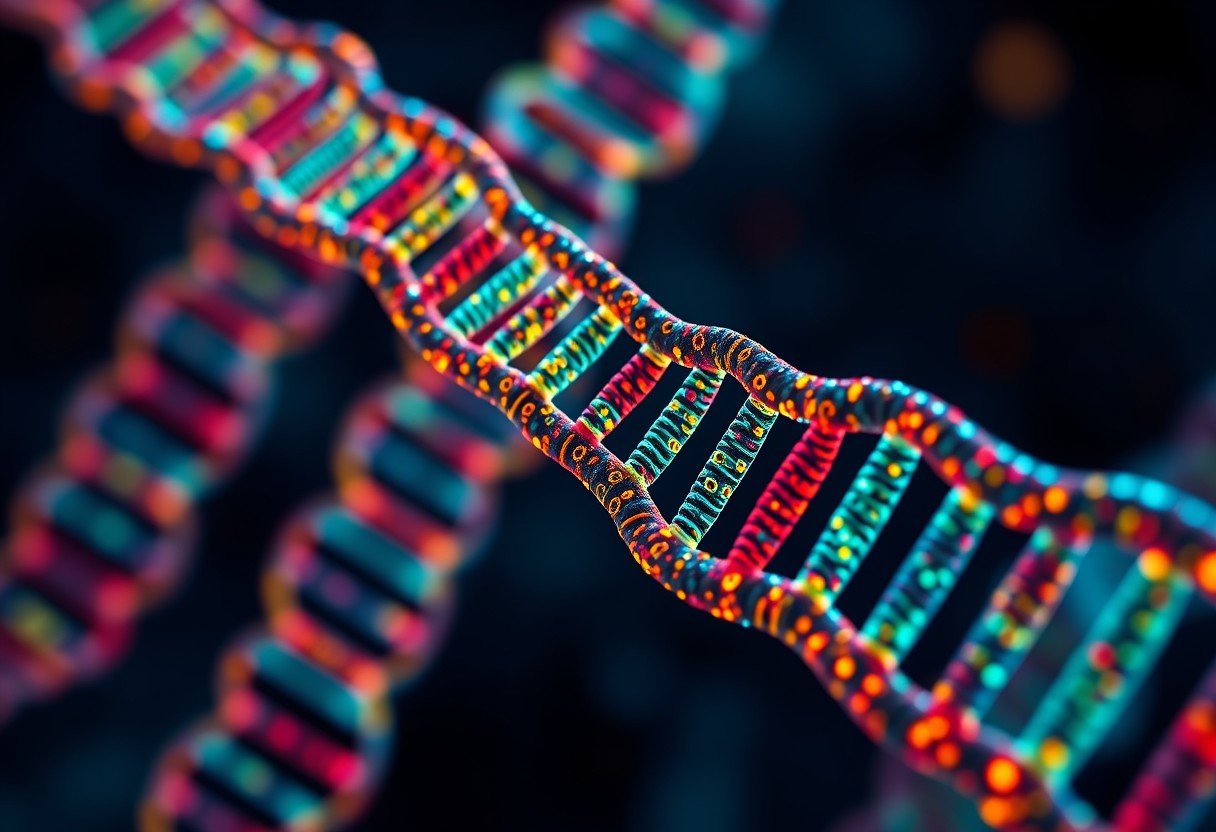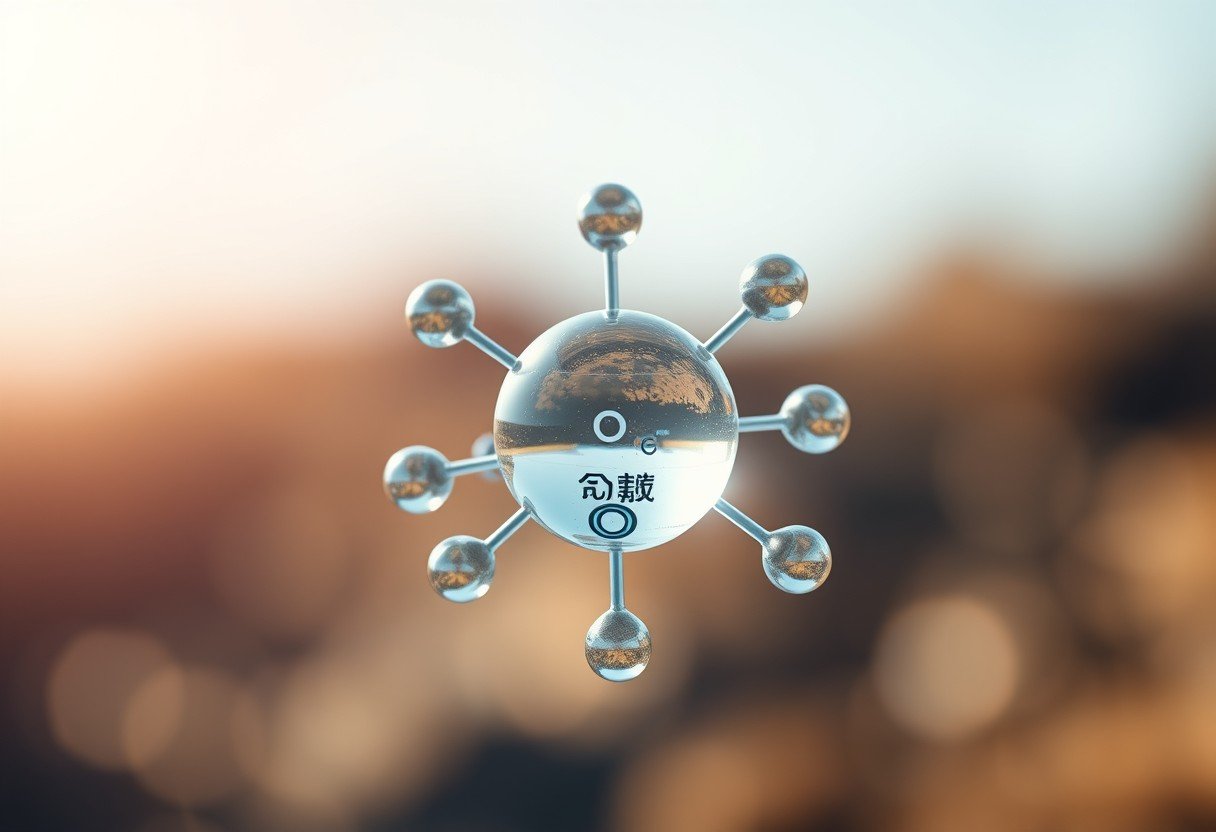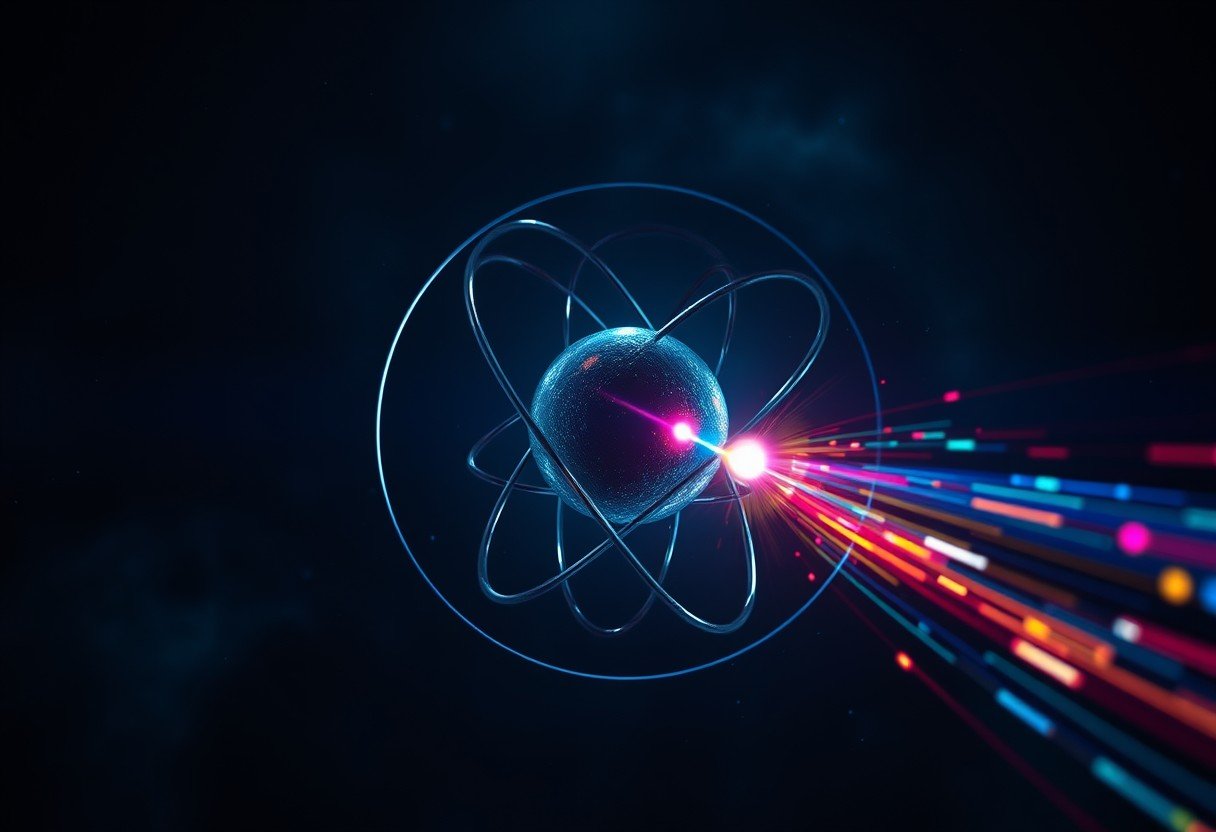Our bodies are made of trillions of cells that constantly divide to keep us healthy. But with every division, the protective caps on our chromosomes, called telomeres, get a little shorter. This article explains how a special enzyme called telomerase works to rebuild these caps, protecting our genetic information. Understanding this process is key to learning about cellular aging, health, and diseases like cancer.
What is the End-Replication Problem?
When our cells copy their DNA to divide, the machinery can’t quite reach the very ends of our linear chromosomes. Think of it like painting a floor; you can’t paint the spot you’re standing on. This leaves a small, uncopied section at the end of the chromosome each time.
This issue is known as the “end-replication problem.” Because of it, the telomeres at the ends of our chromosomes shorten with every single cell division.
Over time, this shortening acts like a clock, counting down the number of times a cell can divide. If telomeres become too short, the cell can no longer replicate, leading to cellular aging or death. This natural process protects us from uncontrolled cell growth but also contributes to the aging of our tissues.
How Telomerase Works: a Simple Breakdown
Telomerase solves the end-replication problem by acting like a specialized construction crew for our chromosomes. It extends the telomeres, adding back the length that was lost during replication. This gives the DNA-copying machinery enough room to copy the entire chromosome without losing important genetic code.
The process is precise and involves a few key steps:
- The telomerase enzyme finds and binds to the single-stranded overhang at the very end of a chromosome.
- It uses its own built-in RNA template as a guide to add new, repetitive DNA sequences to the chromosome’s end.
- The enzyme then moves down the newly extended strand and repeats the process, adding more protective caps.
By rebuilding these telomeres, telomerase ensures that crucial genetic information is not lost during cell division. This function is vital for the long-term health and stability of our cells.
The Key Components of the Telomerase Enzyme
Telomerase is not a single simple molecule. It is a complex enzyme made of two main parts that work together perfectly to carry out its function. Without both components, it cannot rebuild the ends of our chromosomes.
The two essential parts are:
- Telomerase Reverse Transcriptase (TERT): This is the protein part of the enzyme. It acts as the engine, providing the enzymatic power to actually build the new DNA strand.
- Telomerase RNA (TER): This is an RNA molecule that serves as the blueprint or template. TERT reads this template to know which DNA sequence to add to the telomere.
You can think of TERT as a skilled builder and TER as the architectural plan it follows. Together, they form the complete telomerase enzyme, capable of precisely extending telomeres and maintaining the integrity of our genome.
Why is Telomerase so Important for Some Cells?
While telomerase is crucial, its activity isn’t the same across all cells in your body. Most of your normal somatic (body) cells have very little or no telomerase activity. This is a natural way to limit their lifespan and prevent them from dividing out of control.
However, some cells need to divide many more times and rely heavily on telomerase to do so. This difference in telomerase activity is a key factor in determining a cell’s lifespan and function. For example, stem cells, which are responsible for regenerating tissues, maintain high levels of telomerase to allow for continuous division.
The table below shows how telomerase activity varies in different cell types and what that means for the cell.
| Cell Type | Telomerase Activity Level | Effect on Cell Division |
| Normal Somatic Cells (e.g., skin, muscle) | Low or Absent | Limited number of divisions (cellular aging) |
| Stem Cells | High | Can divide extensively for tissue repair |
| Cancer Cells | High (Reactivated) | Unlimited division (immortality) |
The Link Between Telomerase, Aging, and Disease
The regulation of telomerase is a delicate balancing act with huge implications for our health. In most of our cells, the decline in telomerase activity and the resulting telomere shortening are closely linked to the aging process. As telomeres get shorter, cells lose their ability to divide and repair tissues, leading to age-related decline.
On the other hand, cancer has a very different relationship with this enzyme. One of the defining features of most cancer cells is their ability to reactivate telomerase. By turning this enzyme back on, cancer cells can maintain their telomere length and bypass the normal limits on cell division.
This “immortality” allows tumors to grow uncontrollably, making telomerase a critical factor in cancer progression. The dual role of telomerase in both aging and cancer makes it a fascinating and important area of medical research.
Can We Control Telomerase for Medical Treatments?
Because of its central role in cell lifespan, scientists are actively exploring how to manipulate telomerase for therapeutic purposes. The goal is to develop treatments that can either inhibit or activate the enzyme, depending on the medical need.
For cancer treatment, the focus is on creating telomerase inhibitors. These drugs would block the enzyme’s activity in cancer cells, causing their telomeres to shorten and eventually stopping the tumor from growing. This could be a way to selectively target cancer cells without harming most normal cells.
Conversely, for age-related diseases, researchers are investigating the possibility of activating telomerase. The hope is that by restoring telomere length in certain cells, we could improve tissue regeneration and combat some diseases associated with aging. However, this approach carries the risk of accidentally promoting cancer, so researchers are proceeding with extreme caution.
Frequently Asked Questions about Telomerase
What is the main job of telomerase?
The main job of telomerase is to add repetitive DNA sequences to the ends of chromosomes, known as telomeres. This action counteracts the natural shortening that occurs during cell division, thereby protecting the genetic information within the chromosome.
Do all our cells have active telomerase?
No, most normal cells in the human body have very low or no telomerase activity, which limits their lifespan. High telomerase activity is primarily found in cells that need to divide frequently, such as stem cells, and is also reactivated in the majority of cancer cells.
How is telomerase linked to cancer?
Most cancer cells reactivate telomerase to achieve a form of biological immortality. This allows them to bypass the normal limits on cell division, maintain their telomere length, and proliferate uncontrollably, which is essential for tumor growth and progression.
What happens if telomeres get too short?
When telomeres become critically short, the cell can no longer divide safely. It may enter a state of irreversible rest called senescence or undergo programmed cell death (apoptosis). This process is linked to aging and the decline of tissue function.
Can we stop aging by activating telomerase?
While activating telomerase could potentially help repair tissues and combat some age-related conditions, it is not a simple solution to stop aging. Uncontrolled activation of telomerase carries a significant risk of promoting cancer, so this is a complex area of research that requires great care.









Leave a Comment